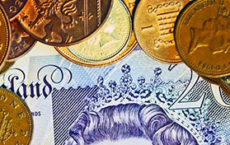The penny is an enduring national symbol in tens of countries around the world and has spawned many different sayings and expressions over the years. But how relevant is it really in the 21st century economy?
Where does ‘penny’ actually come from?
The term ‘penny’ originally comes from the coin introduced in 785 in the Kingdom of Mercia, the largest of the seven kingdoms of Anglo-Saxon Britain. When King Aethelstan united the Heptarchy into the Kingdom of England in 927, the penny was integrated into the currency and was later used to pay the Danegeld – essentially a tax paid to the Vikings to stop them raiding and pillaging English lands.The Vikings exacted a heavy burden on the English, to the extent that many more English pennies from the 10th Century have been found in Denmark than in England. Around this time, the penny was cast from approximately 1.4g of pure silver.
Between 1707 and 1971 the penny was worth 1/240 of a Pound Sterling and continued to be minted in silver until 1796 when it became too costly, later being replaced by copper and then a bronze-steel alloy.
The penny today
The penny as we know it was introduced on Decimal Day – 15 February 1971, along with all of the other coins in current circulation today. In 2016 there were estimated to be around 11.4 billion 1p coins in circulation with an estimated value of £114 million. That is around 172 pennies per person in the UK, or to put it another way, if you melted down every penny in the UK you’d end up with enough molten alloy to fill 16 Olympic-sized swimming pools!
Inflation has caused the real value of a penny to erode and today it is seldom used in daily transactions. Under current legislation a penny ceases to be legal tender when paying for amounts over 20 pence – and the continuous decline in use of the penny over the years has raised questions about whether it is still relevant in today’s increasingly cashless society.
One small step towards abolition was made by the Chancellor Phillip Hammond who in his 2018 Spring Statement floated plans for a consultation which would have paved the way for the end of our 1p and 2p coins. However, following a public outcry the plans were swiftly shelved by Downing Street, despite research that 60% of 1p and 2p coins are only used once with some even going straight in the bin.
More than 30 countries worldwide have already abolished their respective pennies including Canada, Denmark, Finland, and Malaysia, citing low usage or simply seeing them as a waste of good metal.
It seems our humble penny, along with well over a thousand years of history, are safe for now – but for how much longer?














